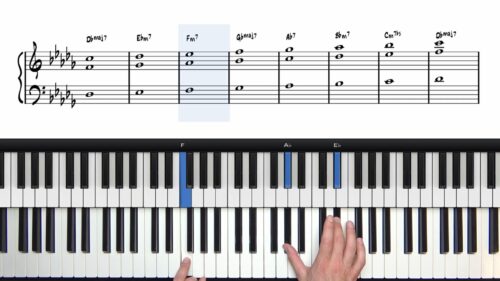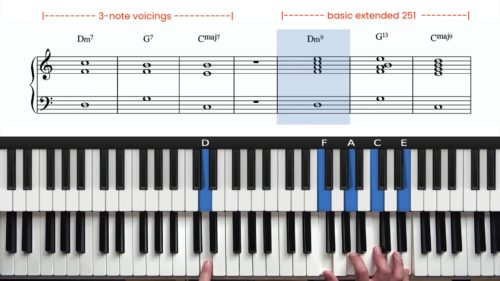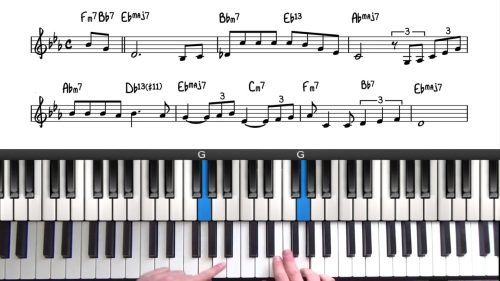‘Body & Soul’ B Section Voicings
In this module, we delve into the B section of the jazz standard ‘Body & Soul’. This part of the tune is particularly interesting due to the modulations and key changes which differentiate it from the A sections of the tune. Understanding these modulations is crucial to create smooth and fluid transitions through each section of the tune.
‘Body & Soul’ Modulations
The B section of “Body & Soul” features two significant modulations. These key changes are essential to understand the transitions in the song’s melody and harmonic structure. From bar 16 to bar 17 and again from bar 20 to bar 21, the key signature changes, marking a shift from Db major to D major and then to C major before returning to Db major in the final A section.
Recognising and navigating these modulations cleanly and confidently is essential to capture the harmonic depth and beauty of the tune.
‘Body & Soul’ B Section Melody and Harmony
Unlike the A sections, which have more space and fewer chord changes, the B section is characterized by a busy melody and dense harmonic structure. This section contains frequent chord changes, with some measures featuring up to four different chords. The melody itself also involves large interval leaps and more meldoic movement, requiring careful attention and practice to execute effectively.
One of the unique aspects of “Body & Soul” is the opportunity to switch styles between the A and B sections. Unlike the A sections which are well suited to a stride left hand style, the B section can be voiced with a combination of stride and spread voicings.
‘Body & Soul’ B Section Voicing Techniques
In the B section, starting with simple voicings is advisable before moving on to more complex ones. Basic voicings provide a solid foundation and ensure that the melody is supported without being overwhelmed. In the next lesson we experiment with more sophisticated voicings and techniques such as upper structure triads and UST triad runs to create more movement and melodic interest.
Practice Tips
-
Start Slow: Begin at a slow tempo to ensure you are comfortable with the harmony and melody. Gradually increase the speed.
-
Focus on Transitions: Pay special attention to the modulations and ensure smooth transitions between keys. Practice these shifts until they become second nature.
-
Isolate Busy Measures: Measures with multiple chord changes can be challenging. Practice them separately then play the whole B section together.
-
Consistent Practice: Regularly revisit the B section. The tune's form is AABA and so we play the A section 3x more than the B section. Spend extra time on the B section to avoid 'weak spots' when playing the tune.






